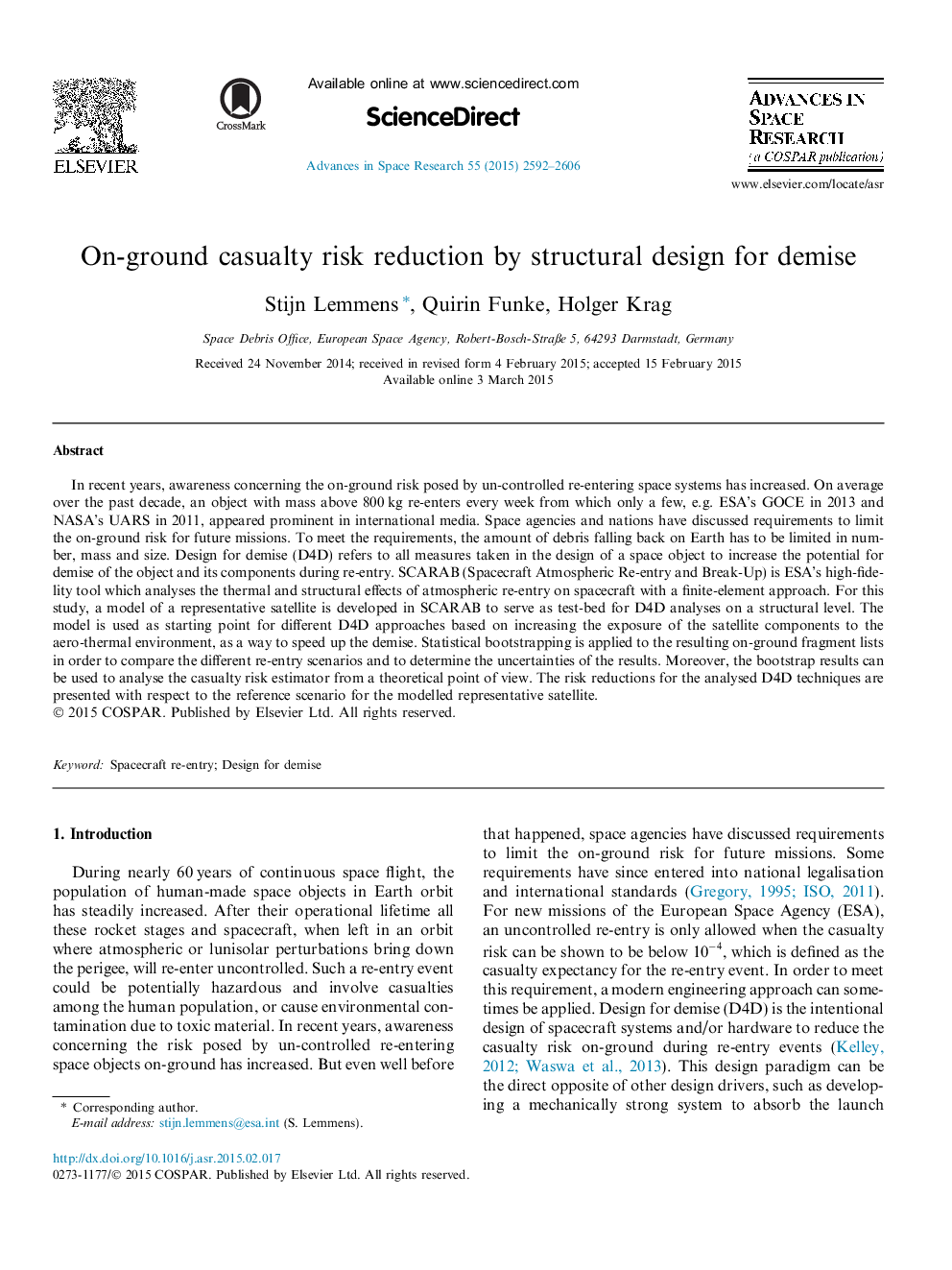| کد مقاله | کد نشریه | سال انتشار | مقاله انگلیسی | نسخه تمام متن |
|---|---|---|---|---|
| 1763406 | 1020001 | 2015 | 15 صفحه PDF | دانلود رایگان |
• Qualitative assessment of structural design for demise techniques for satellites.
• Framework for bootstrap analysis of re-entry break-up events.
• Uncertainty quantification method for on-ground risk from uncontrolled re-entries.
In recent years, awareness concerning the on-ground risk posed by un-controlled re-entering space systems has increased. On average over the past decade, an object with mass above 800 kg re-enters every week from which only a few, e.g. ESA’s GOCE in 2013 and NASA’s UARS in 2011, appeared prominent in international media. Space agencies and nations have discussed requirements to limit the on-ground risk for future missions. To meet the requirements, the amount of debris falling back on Earth has to be limited in number, mass and size. Design for demise (D4D) refers to all measures taken in the design of a space object to increase the potential for demise of the object and its components during re-entry. SCARAB (Spacecraft Atmospheric Re-entry and Break-Up) is ESA’s high-fidelity tool which analyses the thermal and structural effects of atmospheric re-entry on spacecraft with a finite-element approach. For this study, a model of a representative satellite is developed in SCARAB to serve as test-bed for D4D analyses on a structural level. The model is used as starting point for different D4D approaches based on increasing the exposure of the satellite components to the aero-thermal environment, as a way to speed up the demise. Statistical bootstrapping is applied to the resulting on-ground fragment lists in order to compare the different re-entry scenarios and to determine the uncertainties of the results. Moreover, the bootstrap results can be used to analyse the casualty risk estimator from a theoretical point of view. The risk reductions for the analysed D4D techniques are presented with respect to the reference scenario for the modelled representative satellite.
Journal: Advances in Space Research - Volume 55, Issue 11, 1 June 2015, Pages 2592–2606
